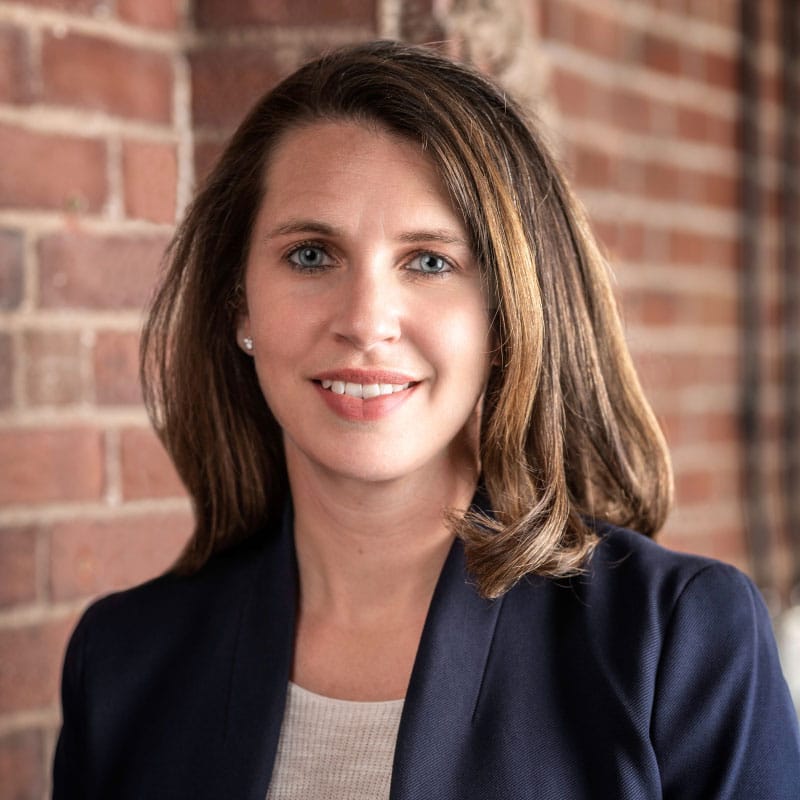The Future of Work: Adapting to Remote Operations

I’ve been thinking a lot about commercial real estate. Since the onset of the pandemic, the intersection of physical space, productivity, human behavior, and work has been a bit of an obsession of mine in part because it’s a topic that invites a lot of opinions but lacks substantive – especially longitudinal – data and enough nuanced discussion of tradeoffs. While Microsoft’s Work Trend Index is one of a handful that provide trending data, the backdrop against which we need to assess that data is so dynamic as to make it directional rather than directive. My research on this has also come to the fore, because as of July 2023, our company will be moving out of the Boston office it’s inhabited for the past five years in favor of a more flexible arrangement.
This decision was informed by a number of factors. Our global footprint is expanding, with BlueCrew in seven time zones; more than half of our US team is no longer in Massachusetts; and only ~4% of the company population, on average, is using the office over a given week. All of these aspects made it clear it was time to rethink some of the things we are doing when it comes to physical space. We have the benefit of the fact that BlueConic started as a two-office company; from day one, we were six hours apart from colleagues in another country and had to build a culture and a company in a distributed way. All that said, it begs the question – what makes me think we can be successful in a primarily remote-first workforce?
One of the key benefits of taking on new challenges is that it can open new and incredible opportunities. As a colleague of mine often says, “If we aren’t changing, we aren’t growing.” I truly believe we have the opportunity to make remote work, well, work incredibly well while remaining true to who we are as an organization and our culture; in fact, I believe we can do more. But ensuring success will require embracing a new system of work with the following pillars:
- Relationships and Culture
Our current set up results in too-few members of the BlueCrew sharing ideas, fostering empathy and trust, and creating a sense of unity via in-person interactions. The new approach requires investments in more meaningful, impactful, and productive in-person interactions across a broader swath of the company more regularly. That will mean a mix of regional events throughout the year that are intentionally designed for various purposes, from fun and bonding to education and training. Examples include attaching annual planning meetings with in-person holiday events and the launch of new programs like “Starting Blocks,” which will bring all new hires together within a certain amount of time after they start to share knowledge and build relationships.We’ll also be heavily leaning on the lessons from The Art of Gathering by Priya Parker on how to gather well and, fun fact, it can be a lot harder than one might think. She writes, “In all my gatherings, whether a board meeting or a birthday party, I have come to believe that it is the way a group is gathered that determines what happens in it and how successful it is, the little design choices you can make to help your gathering soar.”
- Productivity
For this system to be successful, we will all need to adapt the way we work. This is a collective change that will require different investments in and use of infrastructure, processes, and tools – some of which we already use and feel comfortable with today and some that we do not.My expectation is that more than anything, this is going to require considerably more planning and coordination than any team or manager has done to date. Examples include revenue kickoff meetings that are calendared in advance each year and being more deliberate about the ways we connect potential events together – such as using physical industry and customer events as an opportunity to bring individuals together to do in-person work. These types of initiatives will require thinking much further ahead, sticking to budgets and agendas, and leveling up management and systems to ensure goals and outcomes align with desired behaviors to drive an out-sized impact. For large companies, this is standard operating procedure but for a company our size, this kind of structure will be new muscle to build.
- Knowledge Exchange
Perhaps the most difficult and amorphous aspect of this new system of work is finding ways to deliberately structure spaces for facilitating knowledge transfer across and among teams and individuals. That means investing in collaboration tools and thinking differently about how and where information is shared so people are benefiting from other people’s knowledge, experience, and perspective. For example, we’ve already started to spearhead the creation of an internal knowledge community for sharing information and best practices among individuals who are not physically proximate to one another. This is further complicated by individuals’ unique learning styles, variation across teams’ education needs, and the tenure of employees in a department. Again, thoughtfulness and intention of planning will maximize results and ensure we can continuously improve. - Physical Space
Finally, the concept of a “workplace” has evolved over centuries. In fact, three hundred years ago after the Great Fire of London, marketplaces decentralized where people worked and often meetings between merchants and craftspeople, etc. took place in people’s homes. In the same (but more modern) vein, we will be investing in flexible spaces where we can have regional get-togethers in support of broader business goals.
One of the great challenges with this work stuff is that implementing and measuring it is hard. There’s a brilliant professor at Stanford named Nick Bloom who studied remote and hybrid work well before the pandemic and so has a uniquely longitudinal view on productivity, management, and business uncertainty. Another incredible thinker, Dror Poleg, has been writing about the office, cities, and the future of work pre 2020 too (and is writing a new book now). Despite years of work, neither has clear cut answers about how to measure the impact of these massive, intersectional shifts.
Unsurprisingly, neither do I. But I do have a strong conviction that we will need to develop our own measurement framework, inspired by others but attuned to us, so that we can make the best decisions possible over time given that we cannot optimize for everything. This will be a challenge, but it will also be critical. As the wise C.S. Lewis once said, “You can’t go back and change the beginning, but you can start where you are and change the ending.”
Written by Cory Munchbach.
Have you read?
The Global Passport Index: The World’s Most Powerful Passports.
Countries With The Most Billionaires, 2023.
Top CEOs in Switzerland, 2023.
Biggest banks in the world, as measured by total assets, 2023.
The World’s Richest Self-Made Women, 2023.
Ready to join the CEOWORLD magazine Executive Council– Find out if you are eligible to apply.
Add CEOWORLD magazine to your Google News feed.
Follow CEOWORLD magazine headlines on: Google News, LinkedIn, Twitter, and Facebook.
Copyright 2024 The CEOWORLD magazine. All rights reserved. This material (and any extract from it) must not be copied, redistributed or placed on any website, without CEOWORLD magazine' prior written consent. For media queries, please contact: info@ceoworld.biz








